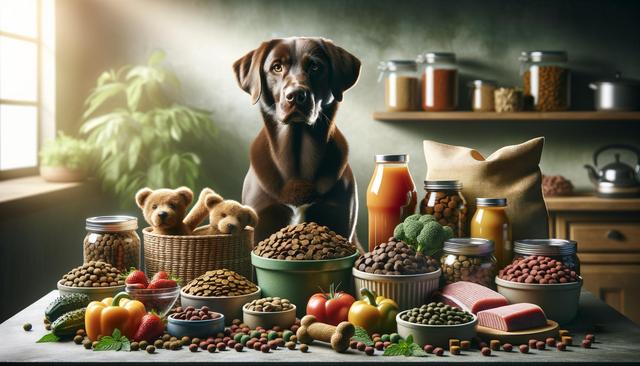Misleading Labels and Ingredient Quality
One of the most common issues with dog foods in 2025 is the use of misleading marketing terms such as “high-protein” or “grain-free.” While these phrases may appeal to pet owners seeking what they believe to be premium nutrition, the reality often falls short. Many of these products use plant-based proteins like peas or potatoes to inflate protein content, which are less bioavailable to dogs compared to animal-based sources. Additionally, the removal of grains is sometimes compensated with fillers that offer little nutritional value and may even cause digestive upset.
Some ingredients to watch out for include:
- Pea protein concentrate (used to increase protein levels artificially)
- White potatoes or tapioca starch (low in nutrients)
- Meat by-products without a clear source
- Artificial preservatives like BHA, BHT, or ethoxyquin
- Excessive salt or sugar used to enhance flavor
While not all grain-free or high-protein dog foods are problematic, the presence of these ingredients in disproportionate quantities can lead to nutritional imbalances and potential health risks over time.
Long-Term Health Risks of Poor Nutrition
A growing concern among veterinarians and pet nutritionists is the long-term impact of substandard dog food. Just like humans, dogs require a balanced diet with appropriate levels of protein, fat, fiber, vitamins, and minerals. When their food lacks essential nutrients or includes harmful additives, their health can deteriorate over time. Chronic consumption of poorly formulated food may result in malnutrition and organ stress, especially in the liver and kidneys.
Common symptoms of poor nutrition in dogs include:
- Dull or patchy coat
- Lethargy or reduced activity levels
- Weight loss or gain without changes in exercise
- Digestive issues such as diarrhea or constipation
- Increased thirst or urination, indicating possible kidney strain
In severe cases, prolonged exposure to low-quality ingredients can contribute to more serious issues such as organ failure or a weakened immune system. Pet owners are advised to consult with a veterinary nutritionist if they notice any concerning signs.
The Problem with Over-Reliance on Trends
In recent years, pet food trends have heavily influenced buying decisions. From raw food diets to grain-free formulas, these trends often start with good intentions but are not always backed by sound nutritional science. In 2025, some manufacturers continue to capitalize on these fads without substantiating the health benefits, potentially putting pets at risk. For instance, grain-free diets were initially developed for dogs with grain allergies, which are relatively rare. Feeding such diets to dogs without medical necessity may introduce unnecessary dietary gaps.
Examples of trend-driven formulations that may be problematic include:
- High-fat ketogenic dog foods for weight control, potentially stressing the liver
- Vegan dog foods lacking complete amino acid profiles
- Raw meat-based diets that aren’t properly handled or balanced for nutrients
It’s essential for pet owners to look beyond marketing and understand what their dog truly needs based on age, activity level, and existing health conditions. Nutrition should be grounded in evidence, not trends.
How to Read Dog Food Labels Effectively
Understanding how to read and interpret dog food labels is critical for making informed choices. The first five ingredients listed typically make up the bulk of the product. Look for high-quality animal proteins, whole grains (if included), and named fat sources. Avoid foods where the primary protein comes from plant concentrates, or where the label lists several carbohydrate sources before any meat-based ingredients.
When reviewing a label, consider the following tips:
- Look for named meat sources like “chicken meal” or “salmon” rather than vague terms like “meat” or “animal meal.”
- Avoid artificial colors and flavors, which serve no nutritional purpose.
- Check for a statement from the Association of American Feed Control Officials (AAFCO) confirming the food meets minimum nutritional requirements.
- Be wary of ingredient splitting—breaking up similar ingredients (e.g., pea protein, pea flour, pea fiber) to disguise their overall volume.
Taking the time to analyze dog food labels can help prevent health issues and ensure your dog receives balanced, high-quality nutrition.
Choosing Safer Alternatives for Your Dog
With so many options available, selecting a nutritious and safe dog food can be overwhelming. However, some general guidelines can steer you toward better choices. Start by consulting with your veterinarian, especially if your dog has specific dietary needs or health concerns. Consider brands that have undergone feeding trials or are formulated by pet nutritionists. Transparency in sourcing and manufacturing practices is another strong indicator of a trustworthy product.
Look for dog foods that feature:
- Whole, named animal proteins as the first ingredient
- Balanced ratios of protein, fat, and fiber suitable for your dog’s life stage
- Minimal use of fillers, artificial additives, and preservatives
- Clear labeling and nutritional information
Additionally, rotating between a few high-quality formulas over time can help reduce the risk of nutrient excess or deficiency from a single product. Always transition slowly when switching foods to avoid gastrointestinal upset. Monitoring your dog’s coat, energy level, and stool quality can also give you valuable feedback on how well the food is supporting their overall well-being.
Conclusion: Stay Informed, Keep Your Dog Healthy
As pet owners, it’s our responsibility to make informed decisions about our dogs’ nutrition. While many dog foods on the market appear to offer premium nutrition, some may not deliver on their promises. Misleading ingredients, trendy formulations, and unbalanced nutrient profiles can lead to long-term health risks. By learning how to read labels, being skeptical of marketing claims, and consulting with veterinary professionals, you can ensure your dog receives the nourishment they need for a healthy, active life. Avoiding potentially harmful dog foods is a critical step in safeguarding your pet’s future.








